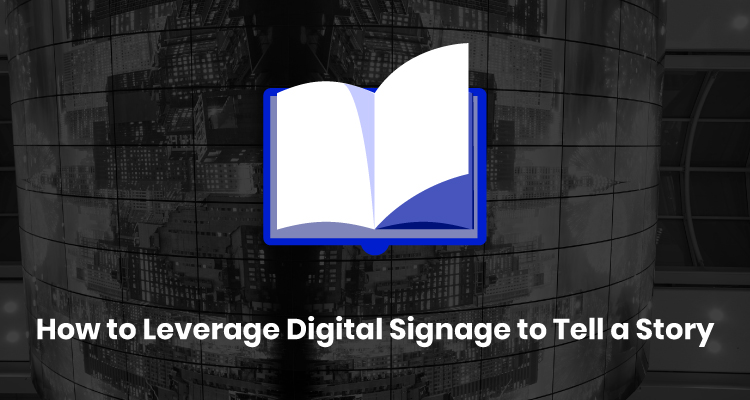DOOH-Digital Signage Networks That Work — And Don’t
 The focus of this series “Power of Content” is to help people with content strategies and how they relate to digital screen media.
The focus of this series “Power of Content” is to help people with content strategies and how they relate to digital screen media.
I’m going to diverge a bit from content articles so that we get the industry on the same page when it comes to business models and basic on screen best practices.
Why? Because there seems to be amnesia among the industry that prolongs business models that simply do not work and end up failing which in turn hurts the industry. This could also be driven by new people coming into the industry about to make colossal mistakes because they do not fully understand the industry business side of the model or do they understand the medium. So I’m just sayin’…
Business models that work:
Point of Sale (POS)
This is a retail merchandising network designed to “help the consumer buy something today.” That is the sole purpose.
Do NOT try to supplement “ADVERTISING” from other products that are NOT relevant to the shopper or to the stores products for sale. This is insanity. As a retailer, one wants to sell products that it carries, not someone else’s. The branding, the messaging, the experience all depends upon a properly executed POS network and believe me when I tell you that it is only about what’s in that store, nothing else.
These are business models that support a merchandizing network including brand networks that cause uplift in sales or return on engagement.
Just recently, I saw an article from someone that promoted ad networks in a retail environment to help offset the costs of the network…really? I thought we left that model in the last decade. Now I’m not trying to quarterback what happened then as we did learn a lot, but for goodness sake learn from what was done then.
For example, we saw CBS spend and ultimately lose $71.5 million in cash after buying a network called SignStorey in September of 2007 that sold advertising in grocery stores with screens up in the ceiling. The quote from Les Moonves is haunting: “CBS Outernet [formerly SignStorey] will offer our advertisers a tremendous, broad new platform to reach consumers out of their homes,” said Leslie Moonves, president and chief executive officer, CBS Corp. “…At the same time, retail outlets will now have access to CBS’s wide array of national and local entertainment, news and sports content from across the company.” This last sentence is the nail in the coffin. So now we can put CBS TV in retail stores? The network struggled for years and finally bit the dust — sad but true.
There also was PRN (now IZON Media), which sold to French media firm Thomson for $285M because of its screen presence in Walmart, Best Buy and Costco. Then the company was booted out by Wal-Mart, which put in its own merchandising network. PRN did remain at the check out. Not at Best Buy though, which converted in 2011. Then Thompson put PRN on the block… but ultimately merged it with IZON. What they have done in retail is the business of putting advertising on the walls of HDTVs in stores like Costco and Fry’s — some of the original model did not work. The POS at checkout is working somewhat, along with other strategies that they have developed. I’m not picking on IZON — I like them — but it has been painful to get there.
Point of Wait (POW)
This category is wide open. Examples include checkout at the register, hospitals, doctors’ offices, taxi cabs, bank lines, internal corporate communications and any place where the consumer has dwell time.
So what’s my beef here? It has more to do with what’s on the screen. First and foremost, tickers and zones: Ugh! I recently wrote an article about this. A viewer cannot both watch your ticker and see your ad, period. Don’t do it (with the only possible exception being an internal corporate network or an elevator network in an office building). The frequency of viewers watching the screens in these types of networks are high, repeating often, and one can take advantage by keeping plenty on the screen to keep the viewer watching hour after hour and day after day.
Point of Transit (POT)
This category of placed-based media is very robust and you will see screens in a number of places that make sense. Remember in this type of network, the consumer is on the go. Examples include airports, train stations, highway billboards and store front windows. Here, one just needs to have ads FULL screen and short message bursts — big and bold. It is about brand and mind muscle. Simple, right? No partitioning of the screen, no zones, OK?
OK, so where does this take us in the future, now with mobile and a LOT more screens in the market place? I think that participation marketing is the key element that will carry this industry. There are so many screens in the marketplace that in a lot of cases (with some exceptions) that it is no longer about the screen on the wall. It just doesn’t command the presence it used to. We have done a number of studies that show that show it’s tough to get the consumers attention. Now this is achieved by putting up GREAT content. That will get their attention. Anything less that great is bad for the brand and bad for business. See these two link for more bad content and the results of our content survey.
One may consider creating the experience combining the use of mobile, the use of touch screens and even gesture to get the conversation with the consumer and the brand in motion. Once in motion, it’s back to the pocket screen…
Author and speaker Keith Kelsen, chief visionary at 5th Screen, is considered one of the leading experts on digital media. More information about his book, Unleashing the Power of Digital Signage — Content Strategies for the 5th Screen, published by Focal Press, can be found on the book’s companion website. Reach him at keith.kelsen@5thscreen.com or on Twitter.





